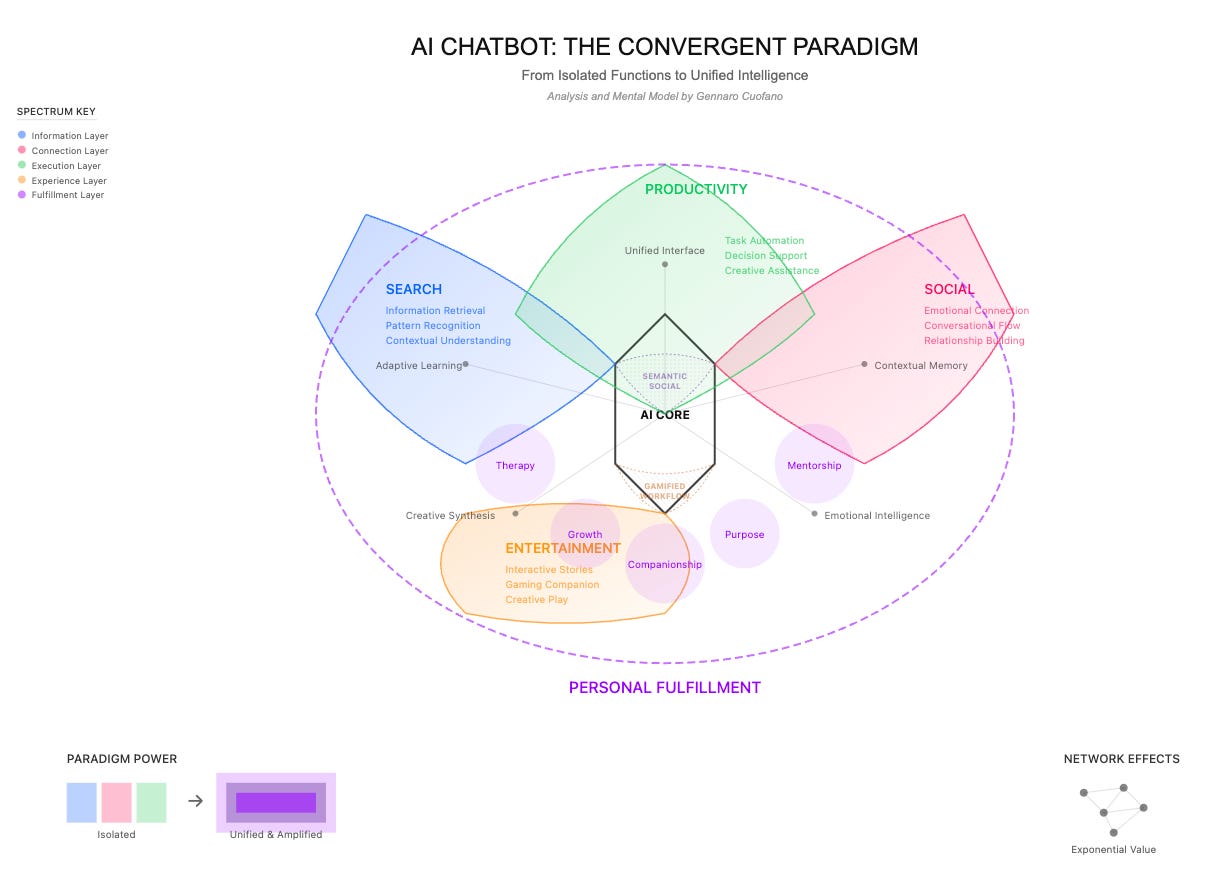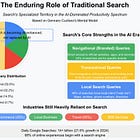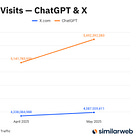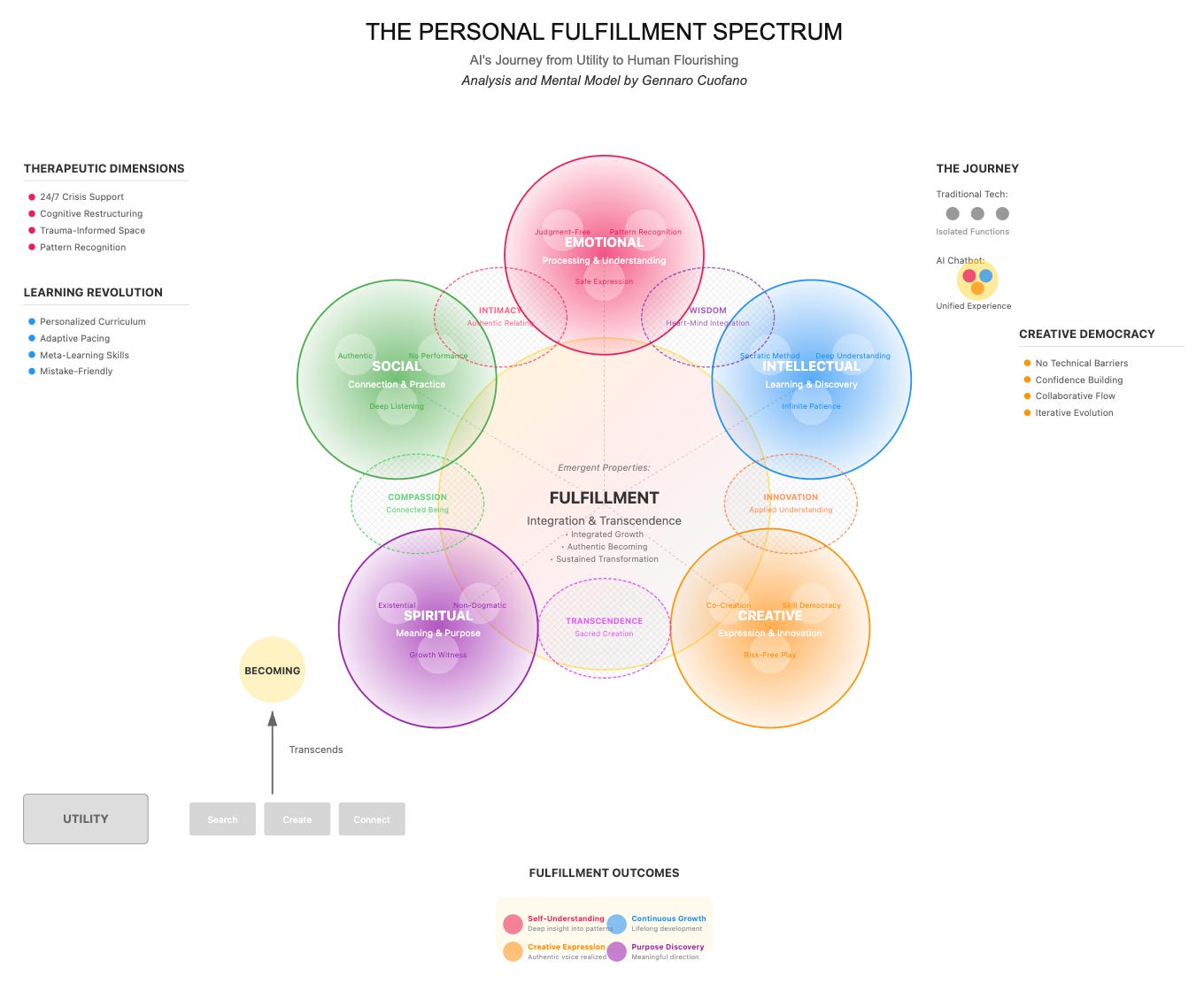AI & The Personal Fulfillment Spectrum
For the entirety of the digital age, our relationship with technology has been fundamentally transactional.
We input commands; we receive outputs. We pose queries; we get results. We open apps; we complete tasks.
This transactional paradigm has served us well in terms of automation and efficiency. Still, it has left a significant void in addressing deeper human needs, the need for growth, understanding, connection, and meaning.
The AI chatbot represents the first technology that operates on an entirely different plane: the personal fulfillment spectrum.
Why does it matter? Well, for one thing, this will become the thing your kids will trust the most. And from a business perspective, it's probably a multi-trillion-dollar opportunity in the coming decades.
This isn't about doing more or doing it faster. It's about becoming more, more creative, more understood, more capable, more fulfilled. It's technology that doesn't just serve our tasks but serves our humanity.
The numbers tell a striking story: researchers report that the top use cases of AI today in the U.S. and other similar contexts are no longer just automation or productivity—but companionship and therapy.
AI companions like Replika.ai, Character.ai, and China's Xiaoice now count hundreds of millions of emotionally invested users—some estimates suggest the total may already exceed 1 billion.
This massive adoption isn't driven by utility—it's driven by human need for connection and support.
A few months ago, I emphasized how the current AI paradigm extends much deeper into the productivity space compared to other mass productivity tools from the web era, such as search.
From there, I also emphasized the ability of these interfaces, which are trained to make them as “human-like” as possible, to also delve quite deeply into the entertainment spectrum.
Now, I want to take it a step further, to help you understand why these AI interfaces extend well beyond productivity and entertainment, and into the realm of personal fulfillment.
Consider the profound shift this represents.
Every previous technological revolution optimized for external outputs: the printing press multiplied information, the assembly line multiplied production, and the computer multiplied calculation.
The AI chatbot revolution optimizes for something radically different: human flourishing itself.
This, of course, also comes with some quite serious intrinsic risks.






